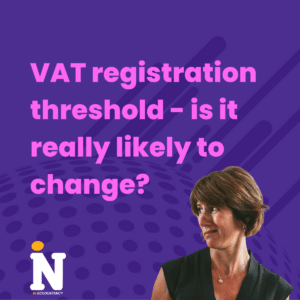How do I close my limited company is a question we have been asked multiple times over recent months, and for a variety of reasons.
So maybe the first question to answer is why directors are considering closing their limited companies in the first place?
Here are just some of the reasons we have been given:
- “I’ve been told my IT Contract will now be inside IR35 and am thinking of taking a salaried job instead”
- “I set up another limited company to do something else, but now want to concentrate on my core business”
- “We’ve found a JV partner who we are going to work with instead of operating through our own limited company”
- “Things just haven’t taken off as we had hoped, so we are going to remain as a partnership for now”
- “Lockdown has knocked us for six – we have had to reduce the team and go back to working on our own”
- “The pandemic has put things into perspective and I don’t want the stress of running a company any more”
And many more…
From a tax efficiency point of view, we tend to suggest that you should be making around £40,000 of profit as a sole trader before it becomes more financially sensible for you to incorporate as a limited company. Yes, there are tax advantages with less profit than that, but the additional compliance and costs involved mean that the true level is a little higher. For more on the pros and cons of operating as a limited company versus as sole trader, see our guide to legal entities here.
Back to how to close your limited company, and what you have to consider…
First, ask yourself these questions:
Is your company trading or dormant?
If your company is dormant and has never traded, or at least has nothing currently going through it, then the answer is simple and you can apply for the company to be struck off as follows:
Pop on over to HMRCs website and download a DS01 form here.
Or, even better, if you know your Companies House authentication code, you can complete the process online here
This is by far the simplest and cheapest method, and removes your company from the companies register.
If your company is trading, then the next question to ask is whether it is solvent or insolvent?
If your company is solvent – ie it has no debts, or is in a position where it is able to pay off any debts it has, then there is a bit of a check list of things you will need to do before you can apply for the company to be struck off. Here’s your starter for ten, but this list isn’t exhaustive and you should definitely seek professional advice when thinking about closing down a trading company.
- Decide the date by when you would like the company to be closed
- Ensure you have collected any monies owed to you – any old customer debt which can’t be collected should be written off
- Settle all outstanding debts – pay all supplier invoices, and remember to cancel any standing orders or direct debits you have set up.
- If your mobile phone is paid through your business account, do remember to transfer that payment if you are keeping your number and contract.
- Prepare your final company accounts, and calculate how much corporation tax is due
- Check whether there are any other tax liabilities outstanding, or repayments due to you from HMRC
- Once all liabilities have been paid, if you still have valuable business assets, or indeed cash in the bank, take advice on the most tax efficient way to withdraw the money.
- Once the bank account has been closed, you should also close down any schemes you have with HMRC such as PAYE, VAT or CIS.
- Don’t forget about other business assets such as domain names, websites and social media accounts which should also be closed down or transferred.
- If you had less than £25,000 worth of distributable assets, then you can follow the process above to strike the company off.
- BUT, you cannot apply to have a trading company struck off until three months after it ceased trading…
So what happens when you strike a company off?
Well, as you can imagine, it follows a process:
First you need to complete the application to strike the company off at Companies House – see question one above for links to the online application, or to download a DS01 form.
Within seven days of making this application it is a Director’s duty to inform any individuals associated with the company, such as shareholders, other directors, any employees, creditors, guarantors, banks, suppliers, landlords and so on and so forth.
For a full list of associated individuals see item 5.1 on HMRC’s Guide to Company Strike Off
Companies House should then acknowledge the application to the address on the form and send a letter to the company’s registered office address to check that the application is genuine.
Warning: If you receive such a letter and have not instigated such a strike off yourself, DO please contact Companies House immediately to advise them accordingly. We have seen some scam attempts whereby companies are essentially held to ransom to stop their company being struck off and assets seized!!
Companies House will then publish a notice of the proposed striking off in the Gazette to allow interested parties the opportunity to object.
If no objections are received then Companies House will go ahead and remove the company from its register.
This will be done within two months* of the date of the original notice, and will be confirmed with a second notice in the relevant Gazette.
*Company strike offs have been taking a little longer than the usual two months recently – probably due to overload relating to the COVID crisis
What if my company is solvent and I have more than £25,000 worth of distributable assets?
If your company has more than £25,000 worth of distributable assets, you cannot simply make a ‘capital distribution’ to take advantage of Business Asset Disposal Relief (previously known as Entrepreneur’s Relief) to reduce your tax rate to 10% rather than your standard rate of income tax.
You could however consider what is known as a Members’ Voluntary Liquidation (MVL), which is much more expensive and lengthy a process than a simple company strike off, but might be beneficial if you have substantial funds.
My Company is Insolvent – what do I do?
Rather than address the details of Business Asset Disposal Relief, MVLs, or indeed options for closing down an insolvent company, we will address each of these in detail in future articles.
If you do need an introduction in the meantime to an insolvency practitioner, please feel free to contact us and we will be happy to make the introduction – we work with experts in this field.
If you have any other questions about closing, or indeed running your limited company, please do contact us, and one of the team will be happy to help.







